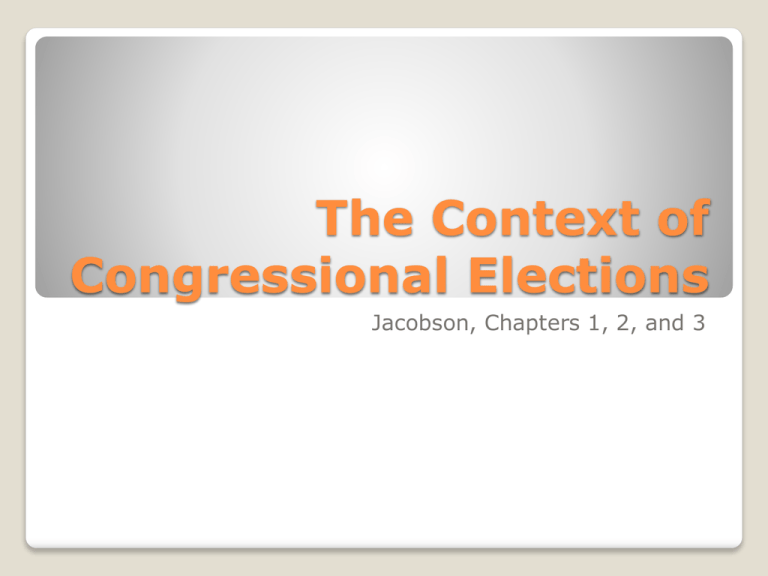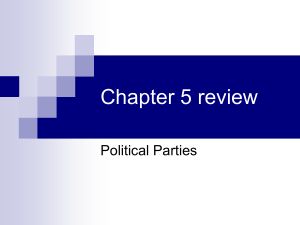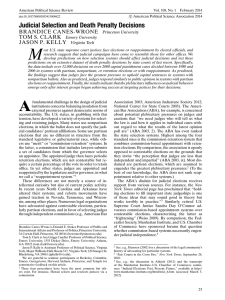Jacobson Chapter 1 and 2 Slides
advertisement

The Context of Congressional Elections Jacobson, Chapters 1, 2, and 3 “Elections stand at the core of American Political life.” They do two things: ◦ The Mythical--Legitimize Authority (presumably we are governed by our own consent) ◦ The Practical--Determine who will hold positions of power in the political system These two meet when we discuss the degree to which those in power are responsive to the electorate. Introduction Who gets elected to Congress and how? Why do people vote the way they do in congressional elections? How do electoral politics affect the way Congress works and the policies it produces? What kind of representation do congressional elections provide? Main Questions To answer these questions, political scientists use a variety of different research orientations. Some look at: ◦ Voters ◦ Candidates and Campaigns Money ◦ Aggregate Results of Congressional Elections Distribution of House and Senate seats ◦ Representation Studying Congressional Elections In order to start a discussion on congressional elections we first need to discuss…. CONTEXT!!! To Begin… From where do members of Congress get elected? First, let’s talk about the House ◦ Districts ◦ Partisan Gerrymandering ◦ Racial Gerrymandering Congressional Districts Partisan • Tempered by incumbent protection (another use of the gerrymander) and candidate focused voters • Facilitated by new computer programs • Districts with multiple incumbents • Texas • Davis v. Bandemer – partisan gerrymander unconstitutional if sufficiently egregious. Racial Thornburg v. Gingles – districts should not discriminate against minorities. • Shaw v. Reno and Miller v. Johnson – limits placed on blatant racial redistricting • Hunt v. Cromartie – race can be considered if primary motivation is partisan. • Senate districts are the states. This creates a unique situation in terms of representation in the Senate. Senators from small states (population) have the same voting power as senators from large states. This generally results in the minority party winning a share of seats in the Senate significantly larger than their share of votes nationwide. The Senate For the most part, states are in charge of administering elections. However, there is a trend towards a uniformity in election laws across the states. A single date for elections encourages: ◦ National Campaigns ◦ Party Tickets ◦ Coattail Effects Election Laws In the big inning (baseball pun intended) local party organizations printed the ballots. Between 1888 and 1896 about 90% of the states adopted the Australian Ballot. ◦ Produced by the government ◦ Lists candidates from all parties ◦ Marked in the privacy of voting booth Makes it easier for ballot splitting. In some cases increased partisan loyalty. The Australian Ballot We cannot discuss parties without discussing the effect that primaries have had on the power of parties in national and even local elections. Political Parties Additionally, the primary system complicates the ability of members to pursue a congressional career. They must navigate two different elections, with two distinct electorates in order to win office. ◦ Primary Constituency ◦ General Election Constituency Primaries There are several other factors that contribute to the variability in election outcomes across the United States: ◦ ◦ ◦ ◦ ◦ ◦ ◦ ◦ Geography Population Economics Income Communications Ethnicity Age Political Habits Social and Political Contexts In the next class we will take an in depth look at the candidates themselves, looking at things such as: ◦ ◦ ◦ ◦ Incumbency Challengers Money Homestyle Next…









